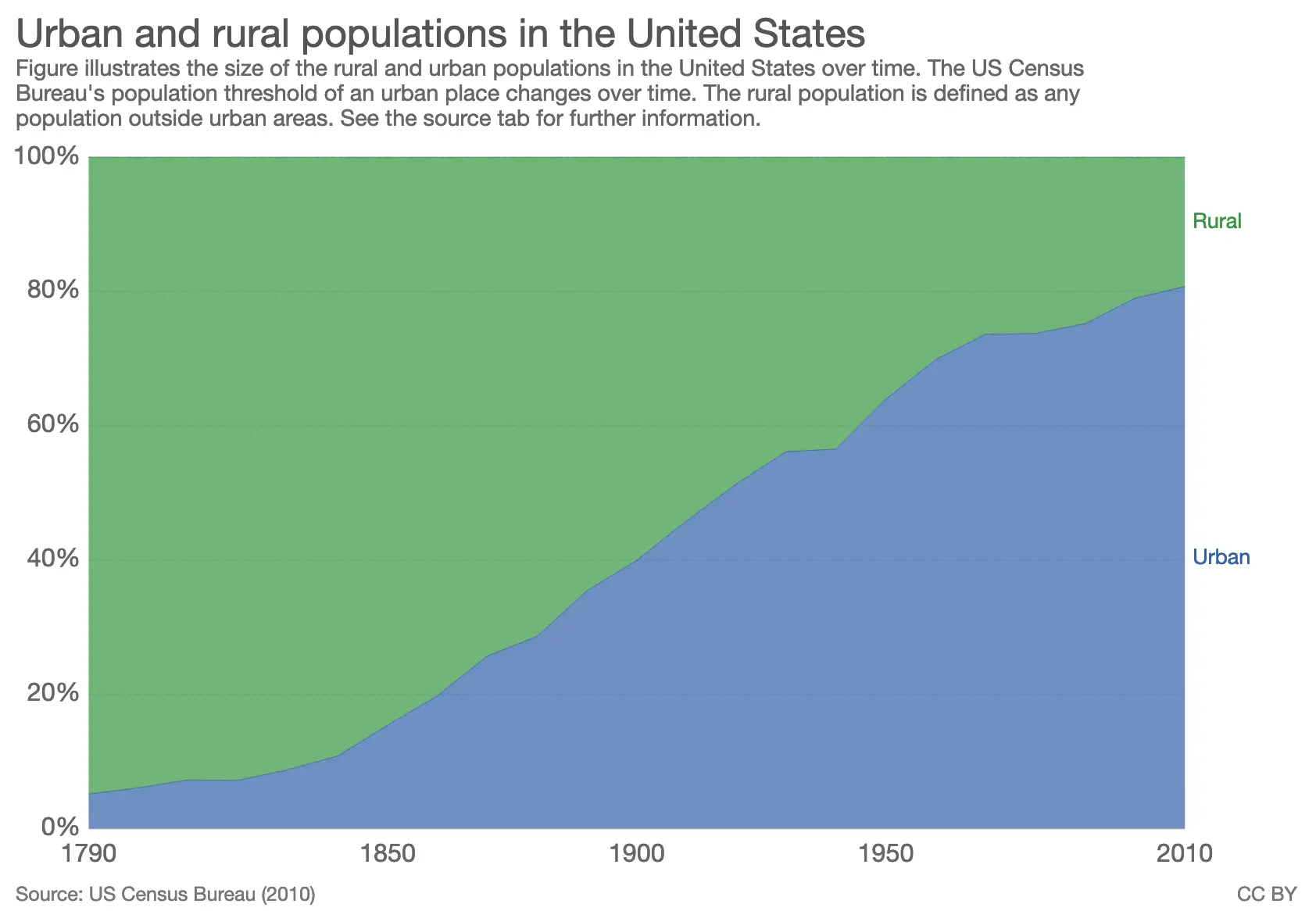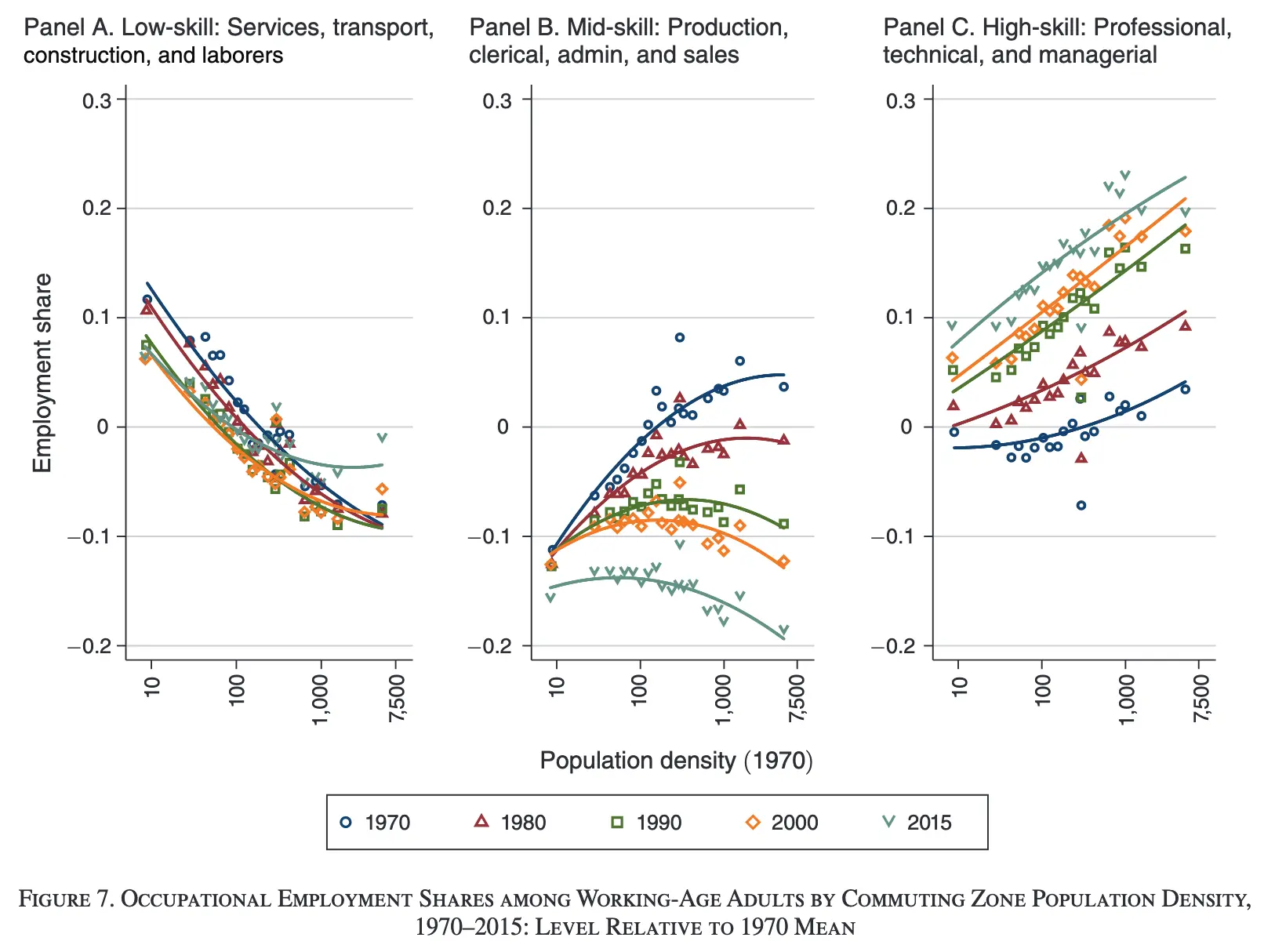The rural/urban divide is an American phenomenon and other bad takes
(Reddit comments here)
This post is a direct response to “Too many people have astoundingly awful takes about “class” and the urban-rural divide in America”. While u/omnic_monk clearly enjoys his American history, he is way too fast to draw parallels between American history and the socioeconomic-cultural urban/rural divide.
His thesis can be summed up as such:
For a closer look at the urban-rural divide in American history in general, […] a good start would be John Ferling’s Jefferson and Hamilton: The Rivalry That Forged a Nation.
This is wrong.
First, the urban/rural divide isn’t an American phenomenon. The same phenomenon is present everywhere in the western world: rurals vote conservative, urbans vote liberal, and rural voting patterns have subjectively moved to be more extreme. Note for instance the Brexit voting map compared to population density map.
The US at most only adds its own spices on a general phenomenon.
Second, while you can draw questionable connections in urban/rural divide to the start of the industrial revolution, we’re in a drastically different situation now. At the start of the industrial revolution, 95% of humans were employed on farms, whereas today this number is around 2%.. In fact, the ratio of rural/urban population shifted from 90/10 to 20/80 in this timeframe:

Living in a world with a 20/80 rural/urban divide is qualitatively different than living in one with a 80/20 divide.
Third, I’d argue the two important readings on the topic are “What Unites and Divides Urban, Suburban and Rural Communities” by PEW (2018) and “Work of the Past, Work of the Future” by David Autor (2019). I touched on the topic in my FAQ on automation, but the trends are visible in this graph:

Graph Explanation: In each of the 3 graphs, the X axis is the population density (left = rural, right = urban). The Y axis is the change in share of the population employed in the sector. So an increasing line means the jobs are mainly urban, a decreasing line means mainly rural jobs. We plot each decade in each graph to see the change over time.
We can see the following trends from the data:
-
High skill jobs have become more urban in the last 40 years. As the decades advance, the share of high skill jobs is shifting towards higher population areas (increasingly steeper lines). Not only that: almost all economic growth since the 1970s came from urban areas.
-
Middle skill jobs are disappearing (their employment share is decreasing with decades). Middle skill jobs were historically a bridge for equality and the rural/urban divide in lifestyle. This means increased inequality over time (see the automation FAQ and inequality FAQ for more on this).
-
Most rural jobs left are low skill. This is tied to the new phenomenon of rural deaths of despair.
-
The “urban poor” is a structurally growing class (low skill jobs are coming back in high population areas recently).
Conclusion
Both rural and urban populations face huge challenges. Increasingly, the only demographic whose income is profiting from technological and economic growth is the college-educated, urban demographic.
For urban dwellers, the main challenges are increasing inequality (non-college educated have poor life quality) and cost disease. Cost disease points certain industries (mainly real estate, healthcare and college education) whose costs are unavoidable and increasing at multiples of economic growth. These extract large shares of economic surplus from growth.
What people would qualify as a solidly well-to-do living in the 1970s (bachelor’s degree, professional career) is now shifting to a middle class urban lifestyle because housing prices, college costs and healthcare costs forcibly extract the rest of the economic value.
So the urban population is separating over time between
-
The non-college educated, whose prospects are dim.
-
The college educated, whose prospects are stagnating
-
A small class of capital owners and high level management (C-Suite executives, etc.) who are in a position to extract large amounts economic value from the assets or enterprises they control.
For rural dwellers, the main challenge is, to put it bluntly, fading into irrelevance. It’s a better living situation for someone without a college degree to live in a rural area (see Autor 20190). However, living in a low-skill/low-cost situation means having very little social capital: you feel culturally irrelevant.
This anomie on a large scale is exacerbated by the fact that the 20% of the population living in this situation has an outsized voting power: we live in a world where countries’ electoral maps were drawn when the split was 20/80 and didn’t change to accommodate the population shift, a large scale analogue to [Old Sarum](https://en.wikipedia.org/wiki/Old_Sarum_(UK_Parliament_constituency)) [footnote]whose 7 voters elected 3 seats[/footnote].
There are no economic solutions to the rural decline. “Just move to a city, lol” isn’t an answer – the quality of life is better for those without a college degree in rural areas. As we saw in the China Shock study, up-skilling rural workers doesn’t work.
To be blunt, the real solution is to match the rural voting representation to their economic and demographic representation.
